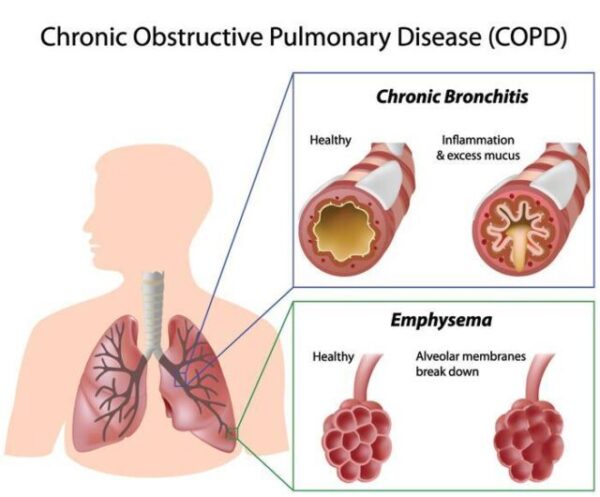Breath of Hope: Exploring Stem Cell Therapy for COPD
Written by Marketing Department, Swiss Stem Cell Malaysia
Published on December 2, 2023
Chronic Obstructive Pulmonary Disease, or often abbreviated as COPD, is a common lung disease that causes reduced airflow and breathing difficulties. The World Health Organization (WHO) reports that 3.23 million people died from COPD in 2019, making it the third most common cause of death globally.
The term of COPD refers to two main conditions.
- Emphysema develops when there is damage to the walls between many of the air sacs in the lungs. These sacs are typically stretchy or elastic. Each sac of air expands with inhalation, resembling a tiny balloon. The air escapes as during exhalation because the air sacs contract. The lungs have a tougher time expelling air from the body when you have emphysema.
- Chronic Bronchitis is an inflammation of the lining of the bronchial tubes, which transport air to and from the lungs. Breathing becomes difficult when the airways fill with thick mucus.

The majority of COPD patients do not exhibit any symptoms until they are in their late 40s or early 50s. Common symptoms of COPD include:
- Shortness of breath
- Wheezing
- Chest tightness
- Chronic cough that may produce mucus
- Frequent respiratory infections
- Unintended weight loss
- Swelling in ankles, feet or legs
Unfortunately, COPD is incurable, and this condition can only be control by quitting smoking, limiting exposure to air pollution, and receiving vaccinations. However, there are complementary medicines that can help in slowing down the progression of this disease, which is the stem cell therapy.
As we know, Swiss Stem Cell offers the latest stem cell therapy, which is the Induced Pluripotent Stem Cells (iPSCs). The iPSCs have three primary cellular layers, namely, Ectoderm, Mesoderm and Endoderm. These three layers are capable of producing more than 220 types of cells in the body.
People with COPD will experience damaged or blocked lungs with phlegm. Hence, the iPSCs with Endoderm have the potential in treating COPD as it has the ability to differentiate into various cell types, including lung cells, promoting the regeneration of healthy lung tissue. These stem cells can evolve into functional lung cells, which play a crucial role in restoring and renewing damaged area. This renewal process has the potential to improve lung function and overall respiratory ability.
In COPD, lung damage happens due to the chronic inflammation. The anti-inflammatory effects of stem cells can modulate the immune response, which helps to reduce inflammation, as well as, contribute to the slowing of disease progression, potentially introducing a form of healing for those who are suffering from this respiratory condition.
Stem cell therapy has the potential to assist in symptom management and slowing the advancement of COPD. So, for those who want to treat their COPD using stem cell therapy, feel free to contact Swiss Stem Cell as we provide the latest Induced Pluripotent Stem Cells (iPSCs). You are also welcome to visit our showroom at the Hilton Hotel for a free consultation.
REFERENCES
- World Health Organization. (2023, March 16). Chronic obstructive pulmonary disease (COPD). https://www.who.int/news-room/fact-sheets/detail/chronic-obstructive-pulmonary-disease-(copd)
- National Heart, Lung and Blood Institute (NIH). (2023, October 25). What Is COPD? https://www.nhlbi.nih.gov/health/copd
- Mayo Clinic. (2020, April 15). COPD – Symptoms and causes. https://www.mayoclinic.org/diseases-conditions/copd/symptoms-causes/syc-20353679
